- Resource recovery
- Resource recovery from excreta, faecal sludge or wastewater
- Low-cost decentralized sanitation system based on vacuum collection and reuse of excreta and kitchen waste (Chinese Academy of Sciences, China)
Low-cost decentralized sanitation system based on vacuum collection and reuse of excreta and kitchen waste (Chinese Academy of Sciences, China)
23.4k views
- fanbin
-
 Topic Author
Topic Author- A scientist who is working on a systematic solution to the resource-oriented sanitation, which is different from flush-toilet-end-pipe-treatment, meets the needs of not only the poor but also the rich, so that all people can live a good and sustainable happy life.
Less- Posts: 20
- Karma: 1
- Likes received: 13
Re: Low-cost decentralized sanitation system based on vacuum collection and reuse of excreta and kitchen waste (Chinese Academy of Sciences, China)
I know many people are very concerned about how to provide basic sanitation for the poorest people.There are also many such people in China, usually in rural areas. But it must be made clear that every improvement in human life must come at a price.The price includes physical or mental as well as monetary.
We can divide the goal of human environmental sanitation progress into five steps: the hygienic-type, the esthetic-type, the convenient-type (modern type), the environmental-type and the sustainable-type. The Hygienic-type is the most basic form of sanitation that meets fundamental health reruirements. The esthetic-type is to add the most basic aesthetic requirements onto the hygenic-type. The convenient-type is to add the most basic modernization requirements, e.g.mechanization, onto the ecthetic-type. Simply speaking, the requirements are that the toilet can be installed in the bedroom and the toilet waste can leave the living room automatically and instantly. Environmental-type is on the basis of the convenient-type to increase the end-pipe treatment so as to make the discharges meet environmental standards. And the sustainable development not only meets the requirements of modern life, but also meets the requirements of sustainable development.
Of the five steps above, the one that requires the most money is the third. This is the main sign of modernization. By contrast, the first two ladders require very limited funds, the key is to promote people's diligence and aesthetics. However, the laziness and carelessness can not be solved through the simple investment of capital and technology, especially in rural areas. I once visited a remote home in China where there was no piping water supply. The family used a traditional composting toilet, a log cabin which was installed about 30 metres from the living room. The floor was covered with boards, with a rectangular hole cut in the middle. Urine and feces from the hole fall into the container below for composting, and the host periodically empties out the composted toilet waste to fertilize his vegetable garden. The toilet was clean and there was no unpleasant smell. In a place like this, instead of inventing a toilet system that doesn't use electricity, we need teach people how to practice good hygiene.
We can divide the goal of human environmental sanitation progress into five steps: the hygienic-type, the esthetic-type, the convenient-type (modern type), the environmental-type and the sustainable-type. The Hygienic-type is the most basic form of sanitation that meets fundamental health reruirements. The esthetic-type is to add the most basic aesthetic requirements onto the hygenic-type. The convenient-type is to add the most basic modernization requirements, e.g.mechanization, onto the ecthetic-type. Simply speaking, the requirements are that the toilet can be installed in the bedroom and the toilet waste can leave the living room automatically and instantly. Environmental-type is on the basis of the convenient-type to increase the end-pipe treatment so as to make the discharges meet environmental standards. And the sustainable development not only meets the requirements of modern life, but also meets the requirements of sustainable development.
Of the five steps above, the one that requires the most money is the third. This is the main sign of modernization. By contrast, the first two ladders require very limited funds, the key is to promote people's diligence and aesthetics. However, the laziness and carelessness can not be solved through the simple investment of capital and technology, especially in rural areas. I once visited a remote home in China where there was no piping water supply. The family used a traditional composting toilet, a log cabin which was installed about 30 metres from the living room. The floor was covered with boards, with a rectangular hole cut in the middle. Urine and feces from the hole fall into the container below for composting, and the host periodically empties out the composted toilet waste to fertilize his vegetable garden. The toilet was clean and there was no unpleasant smell. In a place like this, instead of inventing a toilet system that doesn't use electricity, we need teach people how to practice good hygiene.
Bin Fan
Professor
Research Center for Eco-environmental Sciences (RCEES), Chinese Academy of Sciences (CAS) (www.rcees.ac.cn)
North research center for rural wastewater treatment technology, ministry of housing and urban-rural development of the people’s republic of China (www.nrcrwtt.ac.cn/)
Shuangqing Road 18, Haidian District, Beijing 100085
Professor
Research Center for Eco-environmental Sciences (RCEES), Chinese Academy of Sciences (CAS) (www.rcees.ac.cn)
North research center for rural wastewater treatment technology, ministry of housing and urban-rural development of the people’s republic of China (www.nrcrwtt.ac.cn/)
Shuangqing Road 18, Haidian District, Beijing 100085
Attachments:
-
 1.jpg
(Filesize: 167KB)
1.jpg
(Filesize: 167KB)
-
 2_2020-01-30-2.jpg
(Filesize: 136KB)
2_2020-01-30-2.jpg
(Filesize: 136KB)
Please Log in to join the conversation.
You need to login to reply- fanbin
-
 Topic Author
Topic Author- A scientist who is working on a systematic solution to the resource-oriented sanitation, which is different from flush-toilet-end-pipe-treatment, meets the needs of not only the poor but also the rich, so that all people can live a good and sustainable happy life.
Less- Posts: 20
- Karma: 1
- Likes received: 13
Re: Low-cost decentralized sanitation system based on vacuum collection and reuse of excreta and kitchen waste (Chinese Academy of Sciences, China)
In order to better explain our technology to people who haven't been to the demonstration project we did, we made a video. I wish the site could let me upload the video without relying on a third party, but it's ok if I can't. There are always some political factors that will affect academic exchanges, hehe! I have attached several pictures of the main equipment.
The first picture is a dual-pupm station that can drive 100 toilets (50 household), the second is one type of vacuum toilets, and the third is one type of household kitchen waste disposer.
The first picture is a dual-pupm station that can drive 100 toilets (50 household), the second is one type of vacuum toilets, and the third is one type of household kitchen waste disposer.
Bin Fan
Professor
Research Center for Eco-environmental Sciences (RCEES), Chinese Academy of Sciences (CAS) (www.rcees.ac.cn)
North research center for rural wastewater treatment technology, ministry of housing and urban-rural development of the people’s republic of China (www.nrcrwtt.ac.cn/)
Shuangqing Road 18, Haidian District, Beijing 100085
Professor
Research Center for Eco-environmental Sciences (RCEES), Chinese Academy of Sciences (CAS) (www.rcees.ac.cn)
North research center for rural wastewater treatment technology, ministry of housing and urban-rural development of the people’s republic of China (www.nrcrwtt.ac.cn/)
Shuangqing Road 18, Haidian District, Beijing 100085
Attachments:
-
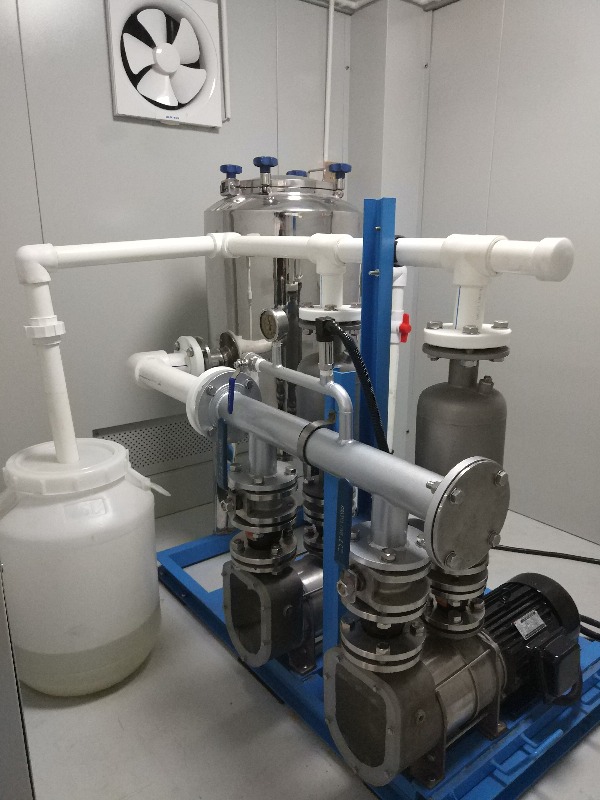 file_fdec39e.jpg
(Filesize: 126KB)
file_fdec39e.jpg
(Filesize: 126KB)
-
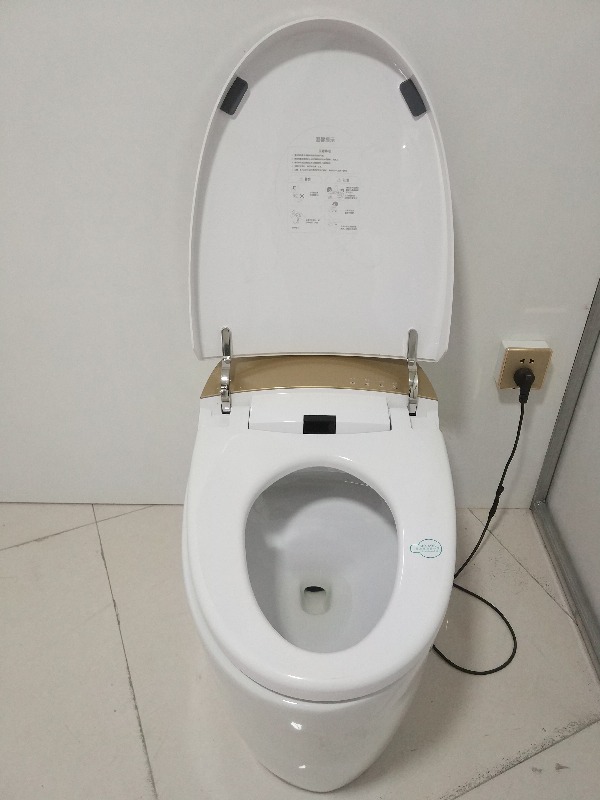 file_c5ae409.jpg
(Filesize: 80KB)
file_c5ae409.jpg
(Filesize: 80KB)
-
 2.jpg
(Filesize: 26KB)
2.jpg
(Filesize: 26KB)
-
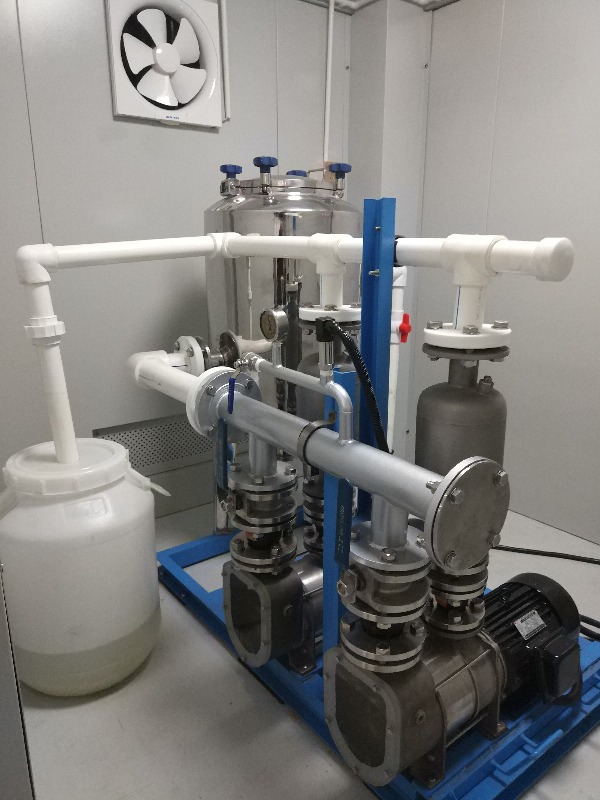 file_d078600.jpg
(Filesize: 126KB)
file_d078600.jpg
(Filesize: 126KB)
-
 file_2e57975.jpg
(Filesize: 80KB)
file_2e57975.jpg
(Filesize: 80KB)
-
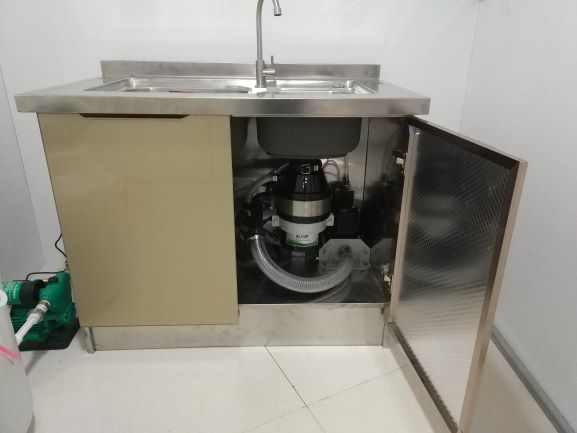 2_2020-01-30.jpg
(Filesize: 26KB)
2_2020-01-30.jpg
(Filesize: 26KB)
Please Log in to join the conversation.
You need to login to reply- AjitSeshadri
-
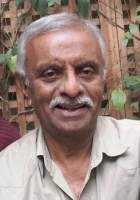
- Marine Chief Engineer by profession (1971- present) and at present Faculty in Marine Engg. Deptt. Vels University, Chennai, India. Also proficient in giving Environmental solutions , Designation- Prof. Ajit Seshadri, Head- Environment, The Vigyan Vijay Foundation, NGO, New Delhi, INDIA , Consultant located at present at Chennai, India
Re: Low-cost decentralized sanitation system based on vacuum collection and reuse of excreta and kitchen waste (Chinese Academy of Sciences, China)
Dear JKM and Chn Acdmy of Sciences
The practices evolved are most apt, in areas where elctrcity is not present,
Conventional manual removal would be resorted to in a safe and sanitary manner.
How are they treated and what safe produces are evolved ex Nght soil,
Will be studied, adapted for any local condition, and used in communities.
As desired, site pics may be shared, pl.
Well wishes.
Ajit Seshadri
The practices evolved are most apt, in areas where elctrcity is not present,
Conventional manual removal would be resorted to in a safe and sanitary manner.
How are they treated and what safe produces are evolved ex Nght soil,
Will be studied, adapted for any local condition, and used in communities.
As desired, site pics may be shared, pl.
Well wishes.
Ajit Seshadri
Prof. Ajit Seshadri, Faculty in Marine Engg. Deptt. Vels University, and
Head-Environment , VigyanVijay Foundation, Consultant (Water shed Mngmnt, WWT, WASH, others)Located at present at Chennai, India
Head-Environment , VigyanVijay Foundation, Consultant (Water shed Mngmnt, WWT, WASH, others)Located at present at Chennai, India
Please Log in to join the conversation.
You need to login to replyRe: Low-cost decentralized sanitation system based on vacuum collection and reuse of excreta and kitchen waste (Chinese Academy of Sciences, China)
fanbin wrote: According to the capacity of the small production line we have established so far, I can complete a project of 10,000 households in one year at a competitive price comparing with the conventional sewer and wastewater treatment.
This sounds excellent. Thanks for sharing. Could you maybe also share some pictures of the specific equippment you developed? In one of the presentations I see a stainless steel vacuum chamber that looks very interesting.
As for uploading a video, I guess YouTube and the like are blocked in China? Maybe try one of the federated PeerTube instances:
joinpeertube.org/
It's a sort of decentralized YouTube that should be accessible from China I hope.
The following user(s) like this post: AjitSeshadri
Please Log in to join the conversation.
You need to login to reply- fanbin
-
 Topic Author
Topic Author- A scientist who is working on a systematic solution to the resource-oriented sanitation, which is different from flush-toilet-end-pipe-treatment, meets the needs of not only the poor but also the rich, so that all people can live a good and sustainable happy life.
Less- Posts: 20
- Karma: 1
- Likes received: 13
Re: Low-cost decentralized sanitation system based on vacuum collection and reuse of excreta and kitchen waste (Chinese Academy of Sciences, China)
Thanks again for Elisabeth's encourage. She and I have had some email exchanges recently.She asked me some questions and encouraged me to continue the topic thread so that others can also benefit.
question of Elisabeth: which translation app do you used? (I once complained to her that Chinese people rarely visit the SusanA website because they are not good at English. But now I find that this is no longer a trouble, because there are translation Apps that can translate whole paragraphs of Chinese into English quickly and well. )
Answere of Bin: The translation App I used is the Netease Youdao Dictionary. Sometimes I also use the Baidu online Translation. In fact, there are several free translation APP in webs except for the uper two. I Think mankind is not far from completing the Babel.
(She adviced me posting here the text which she highlighted in yellow in my email to her. )
I received a $100,000 grant from the Gates foundation in 2010, which allowed me to begin my current work with great results. The reason I didn't apply for the $1 million grant was because I felt the bar was too high and I was afraid to waste my time. If given the chance, I still hope to get another grant from the Gates foundation. I think my team have a solution to the toilet revolution around the world, including the basic equipment technology, but the barriers to widespread adoption are too great. The main obstacle is not technology, but the perceptions of key-stakeholders. One key-stakeholder is the officials of government, another key-stakeholder is the residents. Both of them believe that only flush toilet is modernization, and neither of them cares much about what happens after the flush toilets and what it costs. I hope that the technology revolution will be ultimately realized in industry as well as in engineering by "(demonstration→change perception) - (expanding demonstration→reduce costs, improve technology, change perception further) -..." .
question of Elisabeth: which translation app do you used? (I once complained to her that Chinese people rarely visit the SusanA website because they are not good at English. But now I find that this is no longer a trouble, because there are translation Apps that can translate whole paragraphs of Chinese into English quickly and well. )
Answere of Bin: The translation App I used is the Netease Youdao Dictionary. Sometimes I also use the Baidu online Translation. In fact, there are several free translation APP in webs except for the uper two. I Think mankind is not far from completing the Babel.
(She adviced me posting here the text which she highlighted in yellow in my email to her. )
I received a $100,000 grant from the Gates foundation in 2010, which allowed me to begin my current work with great results. The reason I didn't apply for the $1 million grant was because I felt the bar was too high and I was afraid to waste my time. If given the chance, I still hope to get another grant from the Gates foundation. I think my team have a solution to the toilet revolution around the world, including the basic equipment technology, but the barriers to widespread adoption are too great. The main obstacle is not technology, but the perceptions of key-stakeholders. One key-stakeholder is the officials of government, another key-stakeholder is the residents. Both of them believe that only flush toilet is modernization, and neither of them cares much about what happens after the flush toilets and what it costs. I hope that the technology revolution will be ultimately realized in industry as well as in engineering by "(demonstration→change perception) - (expanding demonstration→reduce costs, improve technology, change perception further) -..." .
Bin Fan
Professor
Research Center for Eco-environmental Sciences (RCEES), Chinese Academy of Sciences (CAS) (www.rcees.ac.cn)
North research center for rural wastewater treatment technology, ministry of housing and urban-rural development of the people’s republic of China (www.nrcrwtt.ac.cn/)
Shuangqing Road 18, Haidian District, Beijing 100085
Professor
Research Center for Eco-environmental Sciences (RCEES), Chinese Academy of Sciences (CAS) (www.rcees.ac.cn)
North research center for rural wastewater treatment technology, ministry of housing and urban-rural development of the people’s republic of China (www.nrcrwtt.ac.cn/)
Shuangqing Road 18, Haidian District, Beijing 100085
Please Log in to join the conversation.
You need to login to reply- fanbin
-
 Topic Author
Topic Author- A scientist who is working on a systematic solution to the resource-oriented sanitation, which is different from flush-toilet-end-pipe-treatment, meets the needs of not only the poor but also the rich, so that all people can live a good and sustainable happy life.
Less- Posts: 20
- Karma: 1
- Likes received: 13
Re: Low-cost decentralized sanitation system based on vacuum collection and reuse of excreta and kitchen waste (Chinese Academy of Sciences, China)
A delegation from the Asian development bank (ADB) China visited the Hangqiao demonstration project on January 20, 2020.They gave a high rating to the modern home-farm cycle mode and the Hangqiao demonstration project.
Bin Fan
Professor
Research Center for Eco-environmental Sciences (RCEES), Chinese Academy of Sciences (CAS) (www.rcees.ac.cn)
North research center for rural wastewater treatment technology, ministry of housing and urban-rural development of the people’s republic of China (www.nrcrwtt.ac.cn/)
Shuangqing Road 18, Haidian District, Beijing 100085
Professor
Research Center for Eco-environmental Sciences (RCEES), Chinese Academy of Sciences (CAS) (www.rcees.ac.cn)
North research center for rural wastewater treatment technology, ministry of housing and urban-rural development of the people’s republic of China (www.nrcrwtt.ac.cn/)
Shuangqing Road 18, Haidian District, Beijing 100085
This message has an attachment file.
Please log in or register to see it.
The following user(s) like this post: JKMakowka
Please Log in to join the conversation.
You need to login to reply- fanbin
-
 Topic Author
Topic Author- A scientist who is working on a systematic solution to the resource-oriented sanitation, which is different from flush-toilet-end-pipe-treatment, meets the needs of not only the poor but also the rich, so that all people can live a good and sustainable happy life.
Less- Posts: 20
- Karma: 1
- Likes received: 13
Re: Low-cost decentralized sanitation system based on vacuum collection and reuse of excreta and kitchen waste (Chinese Academy of Sciences, China)
These days are in a special time, which coincides with the Chinese Lunar New Year. First of all, I wish everybody a Happy Spring Festival!
This Spring Festival has been marked by the horrors of a new coronavirus. Although this plague is a little far from the toilet, but actually also belongs to the broad sanitation category. China's economy, society and environment are at a critical historical stage in its evolution from a traditional mode to a modern one. Many problems that seem to be beyond the reach of both developed and underdeveloped countries are emerging here. This is both a challenge and an opportunity, not only for China, but also for all mankind. Like it or not, China is rewriting the path of human modernization with its own charm.
Toilet revolution, the ultimate goal is to achieve the modernization of human environmental sanitation and pollution control. Although specific forms of technology must be rooted in specific development background, to modernize sanitation, settlement environment and eco-environment services is one common dream of the world's underdeveloped people.
Flush toilet has established a universally accepted norm for the modernization of sanitation, that toilet waste must be able to leave the living room immediately. Based on this principle, in the current stage of scientific and technological development, pipeline is almost the only choice to achieve modern environmental sanitation. By analogy, vacuum source-separation is the only option for the next generation of sanitation. It is hoped that more scientists, social activists, politicians, engineers and investors will work together to make ‘the modern home-farm cycle’ replace the end-pipe-treatment sanitation in technology, industry and engineering.
This Spring Festival has been marked by the horrors of a new coronavirus. Although this plague is a little far from the toilet, but actually also belongs to the broad sanitation category. China's economy, society and environment are at a critical historical stage in its evolution from a traditional mode to a modern one. Many problems that seem to be beyond the reach of both developed and underdeveloped countries are emerging here. This is both a challenge and an opportunity, not only for China, but also for all mankind. Like it or not, China is rewriting the path of human modernization with its own charm.
Toilet revolution, the ultimate goal is to achieve the modernization of human environmental sanitation and pollution control. Although specific forms of technology must be rooted in specific development background, to modernize sanitation, settlement environment and eco-environment services is one common dream of the world's underdeveloped people.
Flush toilet has established a universally accepted norm for the modernization of sanitation, that toilet waste must be able to leave the living room immediately. Based on this principle, in the current stage of scientific and technological development, pipeline is almost the only choice to achieve modern environmental sanitation. By analogy, vacuum source-separation is the only option for the next generation of sanitation. It is hoped that more scientists, social activists, politicians, engineers and investors will work together to make ‘the modern home-farm cycle’ replace the end-pipe-treatment sanitation in technology, industry and engineering.
Bin Fan
Professor
Research Center for Eco-environmental Sciences (RCEES), Chinese Academy of Sciences (CAS) (www.rcees.ac.cn)
North research center for rural wastewater treatment technology, ministry of housing and urban-rural development of the people’s republic of China (www.nrcrwtt.ac.cn/)
Shuangqing Road 18, Haidian District, Beijing 100085
Professor
Research Center for Eco-environmental Sciences (RCEES), Chinese Academy of Sciences (CAS) (www.rcees.ac.cn)
North research center for rural wastewater treatment technology, ministry of housing and urban-rural development of the people’s republic of China (www.nrcrwtt.ac.cn/)
Shuangqing Road 18, Haidian District, Beijing 100085
Please Log in to join the conversation.
You need to login to reply- fanbin
-
 Topic Author
Topic Author- A scientist who is working on a systematic solution to the resource-oriented sanitation, which is different from flush-toilet-end-pipe-treatment, meets the needs of not only the poor but also the rich, so that all people can live a good and sustainable happy life.
Less- Posts: 20
- Karma: 1
- Likes received: 13
Re: Low-cost decentralized sanitation system based on vacuum collection and reuse of excreta and kitchen waste (Chinese Academy of Sciences, China)
I am very grateful to Elisabeth for her encouragement, and she wants me to continue the thread that began seven years ago.
First of all, I'd like to thank the bill-Melinda Gates foundation for giving me the opportunity to conduct a demonstration project combining the technology of vacuum piping with the needs of domestic sanitation and pollution management. The demonstration project was completed in early 2011 at the Chentang Village, Guli town, Changshu Prefecture, Jiangsu province of China. The demonstration project is still serving the residents of the Chentang Village. The demonstration was featured in China Daily (PP6, 6 January 2016) and CCTV-NEWS (News Report, 27 April 2017). The China Daily report, titled "Toilet Revolution in Chentang Village", was published seven months before President Xi Jinping officially declared that "China's rural areas need a toilet revolution".
Around 2014, the Bill-Melinda Gates foundation encouraged the first-stage winners of the Grand Challenge Exploration Award to re-apply for the second-stage projects of $1 million. I gave up the chance because I didn't think I had done well enough, but I never gave up on the research leads I started. I firmly believe that the vacuum source-separation is according with " the next generation of sanitation technology" and is the unique alternative to the end-pipe-treatment mode marked by FLUSH-TOILET at the level of popular use so far. Over the past seven years, I have used the domestic research grants I have received in China to basically turn this technology into a more complete system with competitive price and good service. We now call it " the modern home-farm cycle" in honor of the "traditional home-farm cycle" on which the Chinese have lived since 4000-year ago. We now produce our own vacuum toilets, vacuum kitchen cleaner and vacuum pump stations. We can also provide operation maintenance services with remote monitoring and early warning functions.
According to the capacity of the small production line we have established so far, I can complete a project of 10,000 households in one year at a competitive price comparing with the conventional sewer and wastewater treatment. On this basis, if with another order of 100,000 households, I can fully realize my dream: on the premise of meeting the modernization of environmental sanitation and pollution control, reduce the total construction and operation cost of rural toilet revolution by 50% and increase the sustainable development index by 70%. I believe this is also the dream of SUSTAINABLE DEVELOPEMENT in the field of human sanitation.
In November 2017, we built a more complete demonstration project in the Hangqiao Village, Rugao Prefecture, Jiangsu Province of China. On the level of modernization, this demonstration project perfectly solves the problems of rural Toilet Revolution, which covers not only toilet but the whole sanitation and pollution control system including all the domestic wastewater and wsates. Since the completion of the project, more than 50 delegations have been received, including the Chinese Academy of Engineering, the Asian Development Bank, the Jiangsu provincial government and the Nantong municipal government. We also set up the WeChat public account. Just from November 2017 to December 2018, we published 62 original articles, which were clicked on 48,503 times and read by 25,145 people.
We have made a short video introduction of the demonstration project of Hangqiao village, and I hope Elisabeth can give me a channel to upload to the website for everyone to have a look.
First of all, I'd like to thank the bill-Melinda Gates foundation for giving me the opportunity to conduct a demonstration project combining the technology of vacuum piping with the needs of domestic sanitation and pollution management. The demonstration project was completed in early 2011 at the Chentang Village, Guli town, Changshu Prefecture, Jiangsu province of China. The demonstration project is still serving the residents of the Chentang Village. The demonstration was featured in China Daily (PP6, 6 January 2016) and CCTV-NEWS (News Report, 27 April 2017). The China Daily report, titled "Toilet Revolution in Chentang Village", was published seven months before President Xi Jinping officially declared that "China's rural areas need a toilet revolution".
Around 2014, the Bill-Melinda Gates foundation encouraged the first-stage winners of the Grand Challenge Exploration Award to re-apply for the second-stage projects of $1 million. I gave up the chance because I didn't think I had done well enough, but I never gave up on the research leads I started. I firmly believe that the vacuum source-separation is according with " the next generation of sanitation technology" and is the unique alternative to the end-pipe-treatment mode marked by FLUSH-TOILET at the level of popular use so far. Over the past seven years, I have used the domestic research grants I have received in China to basically turn this technology into a more complete system with competitive price and good service. We now call it " the modern home-farm cycle" in honor of the "traditional home-farm cycle" on which the Chinese have lived since 4000-year ago. We now produce our own vacuum toilets, vacuum kitchen cleaner and vacuum pump stations. We can also provide operation maintenance services with remote monitoring and early warning functions.
According to the capacity of the small production line we have established so far, I can complete a project of 10,000 households in one year at a competitive price comparing with the conventional sewer and wastewater treatment. On this basis, if with another order of 100,000 households, I can fully realize my dream: on the premise of meeting the modernization of environmental sanitation and pollution control, reduce the total construction and operation cost of rural toilet revolution by 50% and increase the sustainable development index by 70%. I believe this is also the dream of SUSTAINABLE DEVELOPEMENT in the field of human sanitation.
In November 2017, we built a more complete demonstration project in the Hangqiao Village, Rugao Prefecture, Jiangsu Province of China. On the level of modernization, this demonstration project perfectly solves the problems of rural Toilet Revolution, which covers not only toilet but the whole sanitation and pollution control system including all the domestic wastewater and wsates. Since the completion of the project, more than 50 delegations have been received, including the Chinese Academy of Engineering, the Asian Development Bank, the Jiangsu provincial government and the Nantong municipal government. We also set up the WeChat public account. Just from November 2017 to December 2018, we published 62 original articles, which were clicked on 48,503 times and read by 25,145 people.
We have made a short video introduction of the demonstration project of Hangqiao village, and I hope Elisabeth can give me a channel to upload to the website for everyone to have a look.
Bin Fan
Professor
Research Center for Eco-environmental Sciences (RCEES), Chinese Academy of Sciences (CAS) (www.rcees.ac.cn)
North research center for rural wastewater treatment technology, ministry of housing and urban-rural development of the people’s republic of China (www.nrcrwtt.ac.cn/)
Shuangqing Road 18, Haidian District, Beijing 100085
Professor
Research Center for Eco-environmental Sciences (RCEES), Chinese Academy of Sciences (CAS) (www.rcees.ac.cn)
North research center for rural wastewater treatment technology, ministry of housing and urban-rural development of the people’s republic of China (www.nrcrwtt.ac.cn/)
Shuangqing Road 18, Haidian District, Beijing 100085
This message has an attachment file.
Please log in or register to see it.
The following user(s) like this post: JKMakowka
Please Log in to join the conversation.
You need to login to reply- fanbin
-
 Topic Author
Topic Author- A scientist who is working on a systematic solution to the resource-oriented sanitation, which is different from flush-toilet-end-pipe-treatment, meets the needs of not only the poor but also the rich, so that all people can live a good and sustainable happy life.
Less- Posts: 20
- Karma: 1
- Likes received: 13
Re: Low-cost decentralized sanitation system based on vacuum collection and reuse of excreta and kitchen waste (Chinese Academy of Sciences, China)
Thanks a lot for recommending readings. It’s an excellence work, but the conclusions might be quite different if the application contexts are in China. There are huge amounts of villages (about 250,000,000) and small towns (about 20,000) which have long histories. Most of them haven’t built the minimum modern sewage systems because tap water and modern home sanitary appliances (e.g. shower and water-flush toilet) have just been spread for several years, and most of whose dwellers are not willing to migrate to a new settlement (e.g. of a 50,000 population). In such places decentralized systems, either using source separation mode or using traditional mode, are almost the exclusive choice. So in china, S-50,000 and C-50,000 must means 100 (even more) S-500 and C-500. Will the conclusions be the same as in Canada?
Additionally, except for some other presumptions might also be different between the two country, the model of the source-separation system (see Fig.1 in the article) is also questionable, at least some key technical links, e.g. grey water collection and treatment, can be more optimized. Furthermore, the assessment neglected the negative effects of the chemical fertilizer on environment and food, both of which are serious in China.
However, we thanks again for the authors. They give us many useful elicitations for our research plan. Please continue to pay attention to the vacuum source-separation in China as well as in our works.
Additionally, except for some other presumptions might also be different between the two country, the model of the source-separation system (see Fig.1 in the article) is also questionable, at least some key technical links, e.g. grey water collection and treatment, can be more optimized. Furthermore, the assessment neglected the negative effects of the chemical fertilizer on environment and food, both of which are serious in China.
However, we thanks again for the authors. They give us many useful elicitations for our research plan. Please continue to pay attention to the vacuum source-separation in China as well as in our works.
Bin Fan
Professor
Research Center for Eco-environmental Sciences (RCEES), Chinese Academy of Sciences (CAS) (www.rcees.ac.cn)
North research center for rural wastewater treatment technology, ministry of housing and urban-rural development of the people’s republic of China (www.nrcrwtt.ac.cn/)
Shuangqing Road 18, Haidian District, Beijing 100085
Professor
Research Center for Eco-environmental Sciences (RCEES), Chinese Academy of Sciences (CAS) (www.rcees.ac.cn)
North research center for rural wastewater treatment technology, ministry of housing and urban-rural development of the people’s republic of China (www.nrcrwtt.ac.cn/)
Shuangqing Road 18, Haidian District, Beijing 100085
Please Log in to join the conversation.
You need to login to replyRe: Low-cost decentralized sanitation system based on vacuum collection and reuse of excreta and kitchen waste (Chinese Academy of Sciences, China)
FYI, see a neutral and balanced science report on the issues involved from Canada: www.iwaponline.com/wst/06412/wst064122417.htm
Economic viability and critical influencing factors assessment of black water and grey water source-separation sanitation system
C. Thibodeau, F. Monette, M. Glaus and C. B. Laflamme
Département de génie de la construction, STEPPE-École de Technologie Supérieure, 1100, Notre-Dame Ouest, Montréal, Québec, Canada H3C 1K3 E-mail: This email address is being protected from spambots. You need JavaScript enabled to view it.
Laboratoire des technologies de l'énergie, Institut de recherche d'Hydro-Québec, 600 avenue de la Montagne, Shawinigan, Québec, Canada G9N 7N5
ABSTRACT
The black water and grey water source-separation sanitation system aims at efficient use of energy (biogas), water and nutrients but currently lacks evidence of economic viability to be considered a credible alternative to the conventional system. This study intends to demonstrate economic viability, identify main cost contributors and assess critical influencing factors. A technico-economic model was built based on a new neighbourhood in a Canadian context. Three implementation scales of source-separation system are defined: 500, 5,000 and 50,000 inhabitants. The results show that the source-separation system is 33% to 118% more costly than the conventional system, with the larger cost differential obtained by lower source-separation system implementation scales. A sensitivity analysis demonstrates that vacuum toilet flow reduction from 1.0 to 0.25 L/flush decreases source-separation system cost between 23 and 27%. It also shows that high resource costs can be beneficial or unfavourable to the source-separation system depending on whether the vacuum toilet flow is low or normal. Therefore, the future of this configuration of the source-separation system lies mainly in vacuum toilet flow reduction or the introduction of new efficient effluent volume reduction processes (e.g. reverse osmosis).
Keywords: anaerobic digestion; black and grey water; cost contributors; economic viability; source-separation sanitation system; vacuum toilets
Regards,
Detlef
Economic viability and critical influencing factors assessment of black water and grey water source-separation sanitation system
C. Thibodeau, F. Monette, M. Glaus and C. B. Laflamme
Département de génie de la construction, STEPPE-École de Technologie Supérieure, 1100, Notre-Dame Ouest, Montréal, Québec, Canada H3C 1K3 E-mail: This email address is being protected from spambots. You need JavaScript enabled to view it.
Laboratoire des technologies de l'énergie, Institut de recherche d'Hydro-Québec, 600 avenue de la Montagne, Shawinigan, Québec, Canada G9N 7N5
ABSTRACT
The black water and grey water source-separation sanitation system aims at efficient use of energy (biogas), water and nutrients but currently lacks evidence of economic viability to be considered a credible alternative to the conventional system. This study intends to demonstrate economic viability, identify main cost contributors and assess critical influencing factors. A technico-economic model was built based on a new neighbourhood in a Canadian context. Three implementation scales of source-separation system are defined: 500, 5,000 and 50,000 inhabitants. The results show that the source-separation system is 33% to 118% more costly than the conventional system, with the larger cost differential obtained by lower source-separation system implementation scales. A sensitivity analysis demonstrates that vacuum toilet flow reduction from 1.0 to 0.25 L/flush decreases source-separation system cost between 23 and 27%. It also shows that high resource costs can be beneficial or unfavourable to the source-separation system depending on whether the vacuum toilet flow is low or normal. Therefore, the future of this configuration of the source-separation system lies mainly in vacuum toilet flow reduction or the introduction of new efficient effluent volume reduction processes (e.g. reverse osmosis).
Keywords: anaerobic digestion; black and grey water; cost contributors; economic viability; source-separation sanitation system; vacuum toilets
Regards,
Detlef
This attachment is hidden for guests.
Please log in or register to see it.
Please log in or register to see it.
www.aqua-verde.de, AquaVerde Ltd. Zanzibar
"simple" Sanitation-Solutions by gravity
Low-Tech Solutions with High-Tech Effects
"Inspired by Circular Economy and Cooperation"
www.flickr.com/photos/aqua-verde/
"simple" Sanitation-Solutions by gravity
Low-Tech Solutions with High-Tech Effects
"Inspired by Circular Economy and Cooperation"
www.flickr.com/photos/aqua-verde/
This message has an attachment file.
Please log in or register to see it.
Please Log in to join the conversation.
You need to login to reply- fanbin
-
 Topic Author
Topic Author- A scientist who is working on a systematic solution to the resource-oriented sanitation, which is different from flush-toilet-end-pipe-treatment, meets the needs of not only the poor but also the rich, so that all people can live a good and sustainable happy life.
Less- Posts: 20
- Karma: 1
- Likes received: 13
Re: Low-cost decentralized sanitation system based on vacuum collection and reuse of excreta and kitchen waste (Chinese Academy of Sciences, China)
The bottleneck of the vacuum ecosan application is not in technology but in the background government policies and its business model.
The technical system of the vacuum ecosan usually comprises 6 units: (1) indoor appliances, e.g. vacuum toilets and vacuum kitchen waste collectors, (2) outdoor pipelines, (3) vacuum pump-station, (4) onsite establishments for storing and pretreating the heavy waters (e.g.,black water, yellow water and so on), and sometimes even for onsite resource reclamation and reusing, (5) heavy water transferring and organic fertilizer preparing, and (6) agriculture or organic agriculture. From the view of technique, all the unit technology is almost ready at present, even if not so matured. The urgently wanted technique is to integrate the whole system and make every part run soundly, especially the indoor appliances. I don't think such questions cannot be overcome today though I know that the progress in technology is always needed.
Almost all the manufacturers of this field and some investors show high strong interesting in the vacuum ecosan mode. I dream to establish a close loop to serve for 100,000 populations. Only in this scale can each unit technique and the system integration be rounded, and especially the economical advantages, the environmental advantages and the social effects of the vacuum ecosan will be in full play!
How much money is needed? Total cost is about 50 million dollars, however 5 million dollars is enough to start and promote such a program. The government, companies and the residents can assume 30, 50, 20 percent of the other investment need respectively.
The technical system of the vacuum ecosan usually comprises 6 units: (1) indoor appliances, e.g. vacuum toilets and vacuum kitchen waste collectors, (2) outdoor pipelines, (3) vacuum pump-station, (4) onsite establishments for storing and pretreating the heavy waters (e.g.,black water, yellow water and so on), and sometimes even for onsite resource reclamation and reusing, (5) heavy water transferring and organic fertilizer preparing, and (6) agriculture or organic agriculture. From the view of technique, all the unit technology is almost ready at present, even if not so matured. The urgently wanted technique is to integrate the whole system and make every part run soundly, especially the indoor appliances. I don't think such questions cannot be overcome today though I know that the progress in technology is always needed.
Almost all the manufacturers of this field and some investors show high strong interesting in the vacuum ecosan mode. I dream to establish a close loop to serve for 100,000 populations. Only in this scale can each unit technique and the system integration be rounded, and especially the economical advantages, the environmental advantages and the social effects of the vacuum ecosan will be in full play!
How much money is needed? Total cost is about 50 million dollars, however 5 million dollars is enough to start and promote such a program. The government, companies and the residents can assume 30, 50, 20 percent of the other investment need respectively.
Bin Fan
Professor
Research Center for Eco-environmental Sciences (RCEES), Chinese Academy of Sciences (CAS) (www.rcees.ac.cn)
North research center for rural wastewater treatment technology, ministry of housing and urban-rural development of the people’s republic of China (www.nrcrwtt.ac.cn/)
Shuangqing Road 18, Haidian District, Beijing 100085
Professor
Research Center for Eco-environmental Sciences (RCEES), Chinese Academy of Sciences (CAS) (www.rcees.ac.cn)
North research center for rural wastewater treatment technology, ministry of housing and urban-rural development of the people’s republic of China (www.nrcrwtt.ac.cn/)
Shuangqing Road 18, Haidian District, Beijing 100085
Please Log in to join the conversation.
You need to login to replyRe: Low-cost decentralized sanitation system based on vacuum collection and reuse of excreta and kitchen waste (Chinese Academy of Sciences, China)
Definitely a worthwhile line of research. Personally I have since then moved on and are not in research anymore (personal reasons), but I still think it would make a lot of sense to develop a really low cost vacuum sewer system.
I think the original designs from from around 1900 can still give a lot of insights regarding that (most of the original patents are publicly available online). They did for example use common appliances in the house and not those complex and expensive vacuum toilets.
I think the original designs from from around 1900 can still give a lot of insights regarding that (most of the original patents are publicly available online). They did for example use common appliances in the house and not those complex and expensive vacuum toilets.
Please Log in to join the conversation.
You need to login to reply
Share this thread:
- Resource recovery
- Resource recovery from excreta, faecal sludge or wastewater
- Low-cost decentralized sanitation system based on vacuum collection and reuse of excreta and kitchen waste (Chinese Academy of Sciences, China)
Recently active users. Who else has been active?
Time to create page: 0.250 seconds








